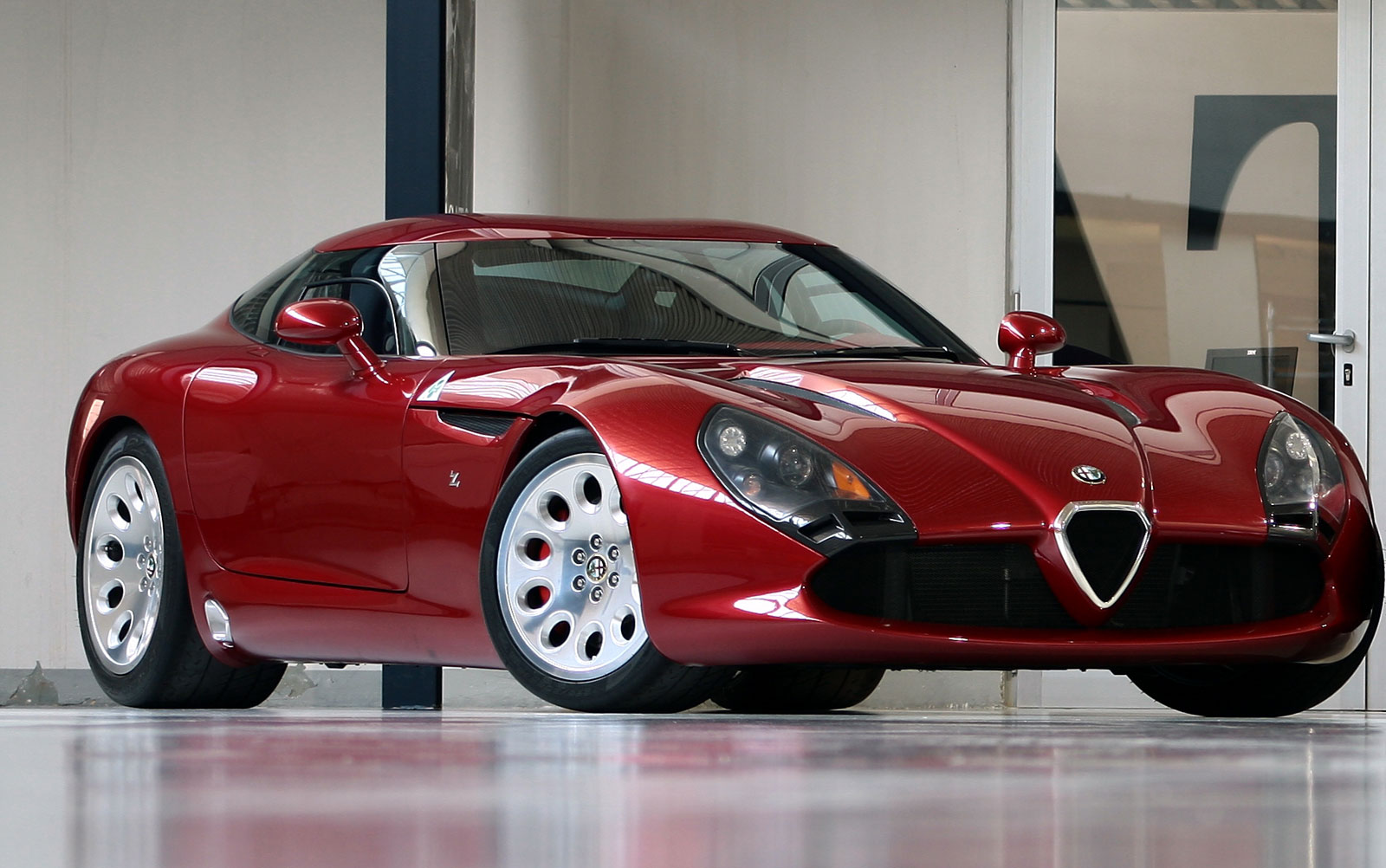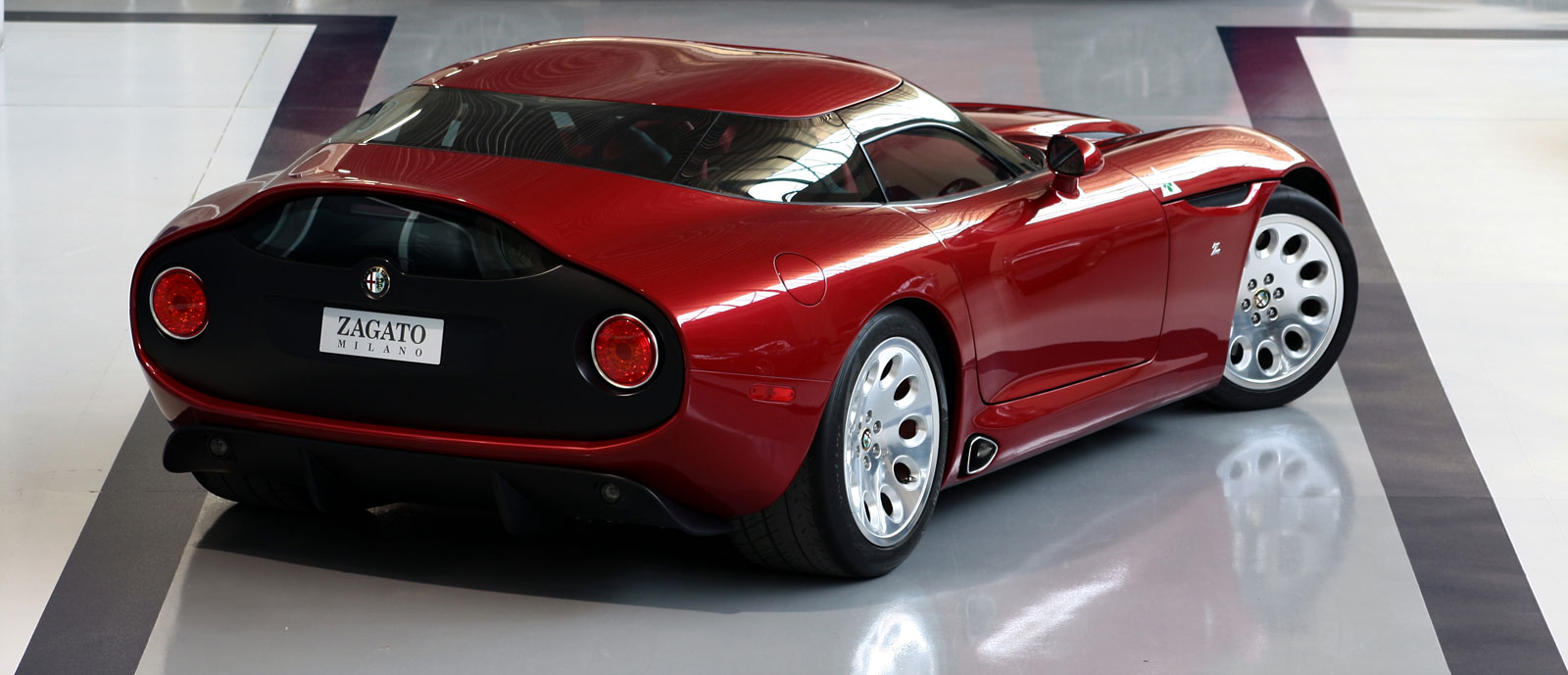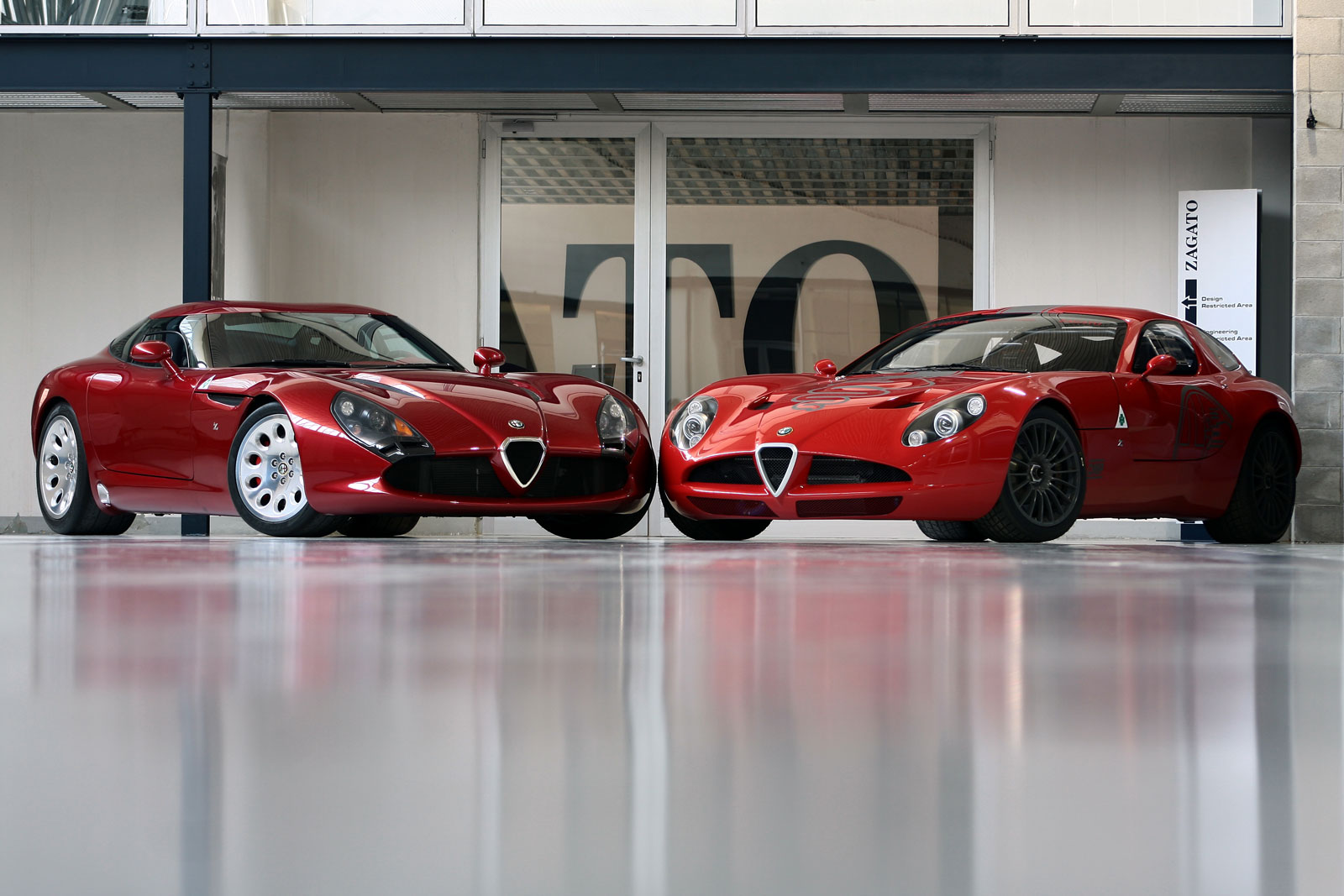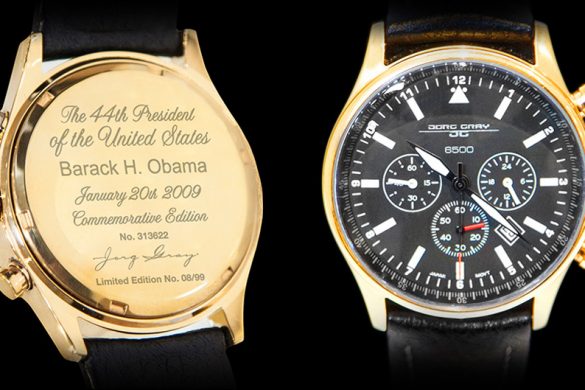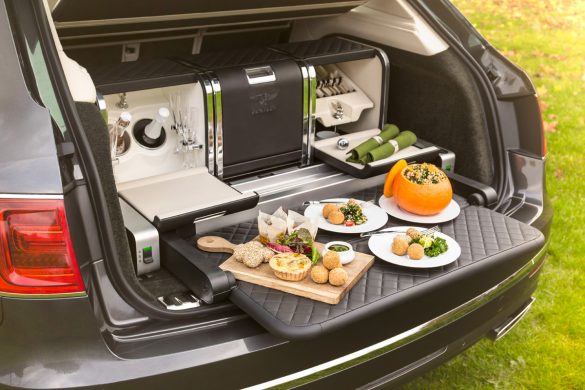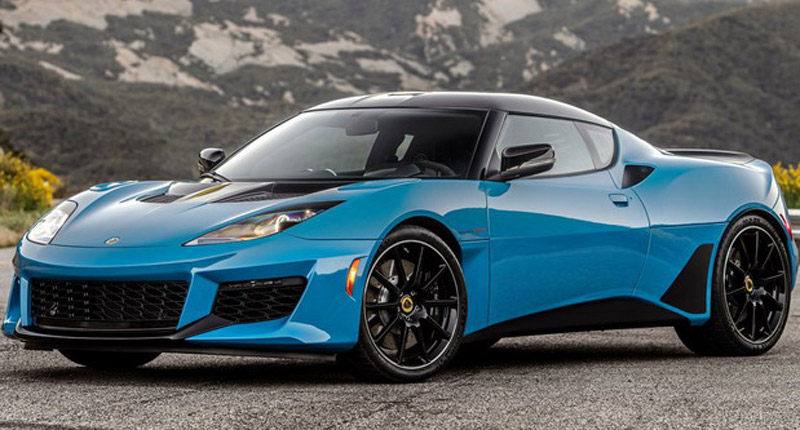Italian design house Zagato has announced the Alfa Romeo TZ3 Stradale, a road-going follow-up to 2010’s TZ3 Corsa racing car concept which won Concept of the Year honours at the Villa del’Este Concours last May. The sumptuous TZ3 Stradale is part of a continuous celebration by Zagato of Alfa Romeo’s centenary.
The Corsa was billed and envisioned as a pure racing car, and the TZ3 Stradale is the street-going version, but it keeps that raw intensity, based on the Dodge Viper, which was itself a race car barely disguised in street trim. Unlike the Corsa, which was intended to get its power from a 4.2-liter V-8 rated at 420 horsepower paired with a six-speed sequential gearbox, the Stradale is expected to keep the Viper’s 8.4-liter V-10 and 600-horsepower output.
Zagato says that the TZ3 Stradale could be the first American Alfa Romeo, since it’s powered by a USA engine. (Dodge is now technically an affiliate of Alfa Romeo within the Fiat Group, and it’s said that the Viper successor will look more than a little like the 8C.) The most striking design feature on both TZ3 models is the chopped-off Kamm tail, which was inspired by the original TZ, but was also seen on such period cars as the Ferrari 250 GTO and the Shelby Cobra Daytona.
That’s good news. The bad news: Only ten copies are being built, so you probably won’t ever see one. The first is going to noted American collector Eric King, the second and third examples already earmarked for customers in Japan and Europe.
Press Release:
Zagato TZ3 Stradale
The “TZ3 program” managed by Zagato to celebrate the 100th Anniversary of Alfa Romeo (1910-2010) ends with the delivery of the TZ3 Stradale.
The initiative started in 2009 with the manufacturing of the “one off” TZ3 Corsa which won the Villa D’Este Design Concept Award in 2010 and followed with nine (9) TZ3 Stradale.
Two different approaches for the same tribute.
The TZ3 Corsa is a track car. It is not a design exercise. It is a Neo-Classic car.
The TZ3 Stradale is a Design Exercise. It is not a race car. It is an Avant-garde car.
The TZ3 Corsa is a tribute to the Alfa Romeo and Zagato racing heritage. It is a one off.
The TZ3 Stradale is a tribute to the Alfa Romeo and Zagato street legal heritage. Just 9 examples in the world.
In total 10 collectible cars for the 100th anniversary of Alfa Romeo made by its most prolific contributor, both with race and road legal bodies.
The TZ3 Corsa celebrates men and machines of the Alfa Romeo Zagato racing heritage:
- Scuderia Ferrari (20s and 30s)
- Alfa Corse (40s and 50s)
- Autodelta (60s and 70s)
- Scuderia Zagato (80s and 90s)
The TZ3 Stradale celebrates the road legal heritage of Alfa Romeo Zagato coupés:
- RLSS, 1500, 1750, 2300 and 2900 Zagato (20s and 30s)
- 6C 2500 Panoramica, 1900 SSZ and the Giulietta SVZ (40s and 50s)
- SZ, 2600 SZ, Giulia TZ and Junior Z (60s and 70s)
- S.Z. and R.Z. (80s and 90s)
The TZ3 Corsa is based on a mono shell carbon fibre chassis, coupled with a tubular frame and a handbeaten lightweight aluminium body. It’s equipped with a front-central V8 90° 4.2 litres engine and 6-speed sequential gearbox.
The TZ3 Stradale is based on the Viper ACR mechanical chassis with a carbon fibre body. “Bellezza necessaria” is the inspiration of this car which matches for the first time an USA power train and can represent the first American Alfa Romeo.
Following Zagato’s gentlemen-driver heritage, TZ3 Corsa has been commissioned by the Alfa Romeo Zagato collector Martin Kapp. The first TZ3 Stradale has been delivered to the US Alfa Romeo and Zagato collector (and Saratoga Automobile Museum’s board member) Eric King. The TZ3 Stradale n°2 and n°3 will be delivered in Japan and Europe.
Both TZ3 Corsa and TZ3 Stradale boast a typical Kamm-tail (K-tail) layout. This solution became famous in Italy with the “Coda Tronca” bodies which were tested by Zagato in the beginning of the 60s. They reached their apex on the Alfa Romeo TZ and TZ2.
Kamm Effect is part of the functional design approach that aims to the aerodynamic efficiency.
According to this, the CX can be lowered by keeping compact volumes at the same time. The reduction of the wind resistance is assured with the Kamm Tail design, without any need of a very stretched “drop” shape of the tail.

